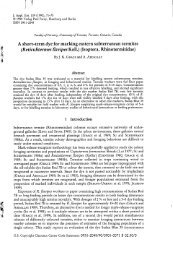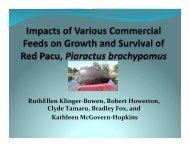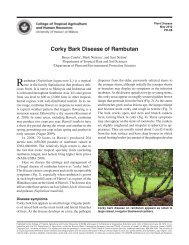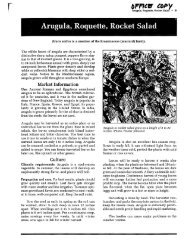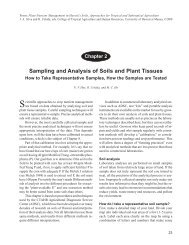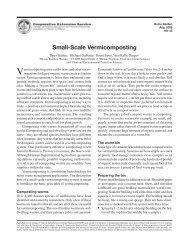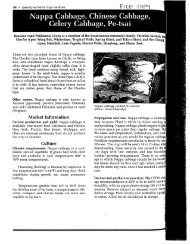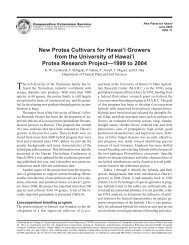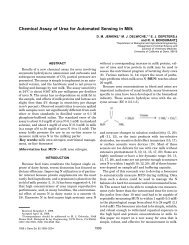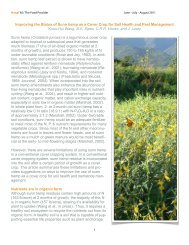Macadamia Nuts in Hawaii: History and Production - ctahr ...
Macadamia Nuts in Hawaii: History and Production - ctahr ...
Macadamia Nuts in Hawaii: History and Production - ctahr ...
Create successful ePaper yourself
Turn your PDF publications into a flip-book with our unique Google optimized e-Paper software.
,<br />
Figure 47. Germ<strong>in</strong>at<strong>in</strong>g seeds with micropyle, stem end, <strong>and</strong> suture<br />
to the side, show<strong>in</strong>g the straight-l<strong>in</strong>e orientation of stem<br />
<strong>and</strong> roots. The properorientation can be accomplished by<br />
push<strong>in</strong>g seeds <strong>in</strong>to place on the firm medium before<br />
cover<strong>in</strong>g with a layer of plant<strong>in</strong>g medium.<br />
38<br />
(Counesy of Ralph H. Molo:aul<br />
I<br />
macadamia nuts. Moltzau's illustration shows that<br />
when the micropyle <strong>and</strong> stem-end orientation of<br />
the seeds are aligned horizontally, with the suture<br />
to the side, the hypocotyl with its shoot <strong>and</strong> root<br />
emerges from the seed <strong>in</strong> a straight up <strong>and</strong> down<br />
orientation.<br />
On the other h<strong>and</strong>, Fig. 48 illustrates malformations<br />
of seedl<strong>in</strong>g root systems when the seeds, at<br />
plant<strong>in</strong>g, are improperly h<strong>and</strong>led with the micropyle<br />
<strong>in</strong> either an up or down position, or when<br />
obstructive materials are <strong>in</strong> the plant<strong>in</strong>g medium.<br />
The result can be trees as shown <strong>in</strong> Fig. 49 with<br />
gross embedment of bark as they developed <strong>in</strong> a<br />
twisted fashion. The "creases" are very harmful<br />
<strong>and</strong> can result <strong>in</strong> total loss of a tree aftera profitable<br />
period of growth <strong>and</strong> production.<br />
Figure 50 illustrates another bad situation<br />
when the taproots of young seedl<strong>in</strong>gs are cut to<br />
accommodate the size of conta<strong>in</strong>ers, or when the<br />
taproots <strong>in</strong>stead develop as laterals <strong>in</strong> structure<br />
<strong>and</strong> <strong>in</strong> function. Note that the many laterals are<br />
emerg<strong>in</strong>g on the stem, which is no more than 2 to 3<br />
<strong>in</strong>ches long <strong>and</strong>, morphologically, has already<br />
Figure 48. Malformed seedl<strong>in</strong>gs. Left to right, (I) roots grow<strong>in</strong>g <strong>in</strong>to<br />
a half-shell remnant <strong>in</strong> the plant<strong>in</strong>g medium, caus<strong>in</strong>g<br />
cupp<strong>in</strong>g <strong>and</strong> short upward growth; (2) curved stem<br />
growth from seeds with micropyle at the bottom; (3)<br />
seedl<strong>in</strong>g with micropyle at the top; (4) curved root growth<br />
caused by a large obstruction <strong>in</strong> the seedl<strong>in</strong>g root area.



